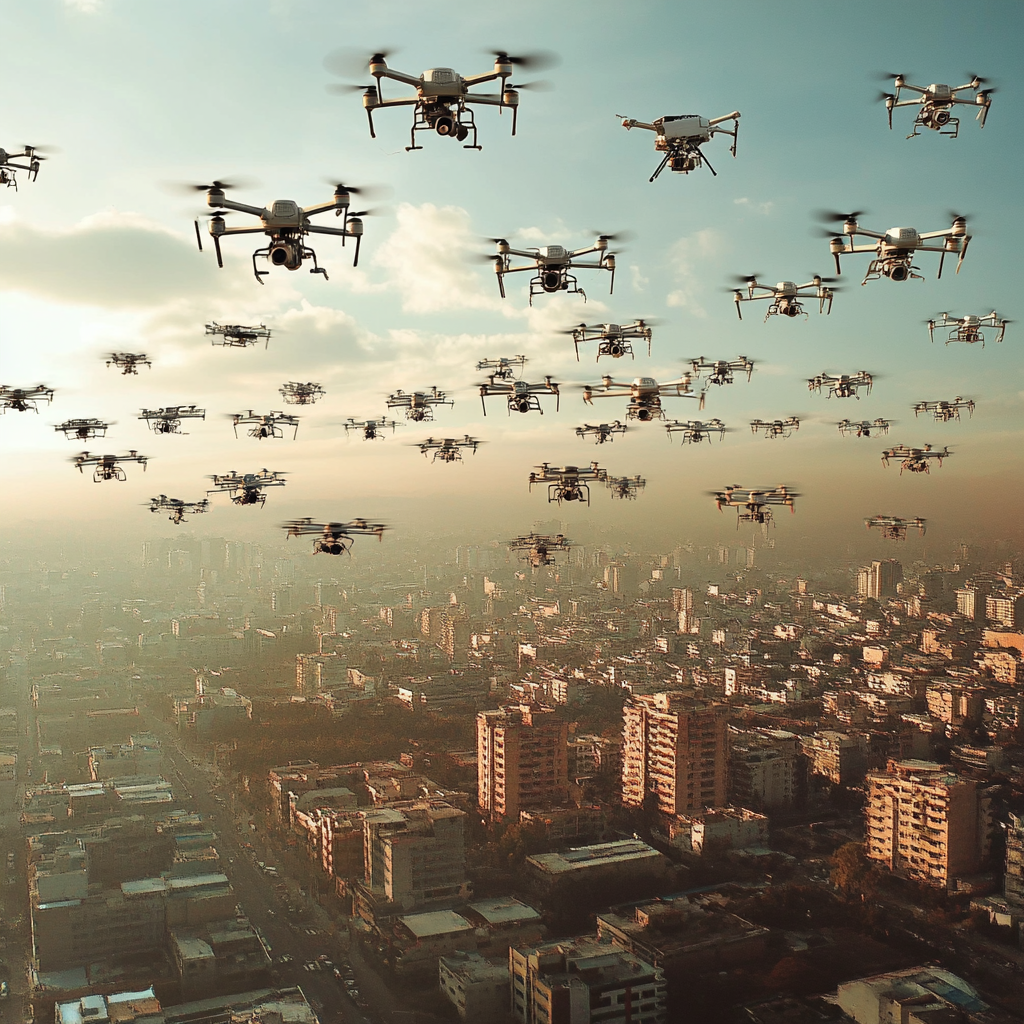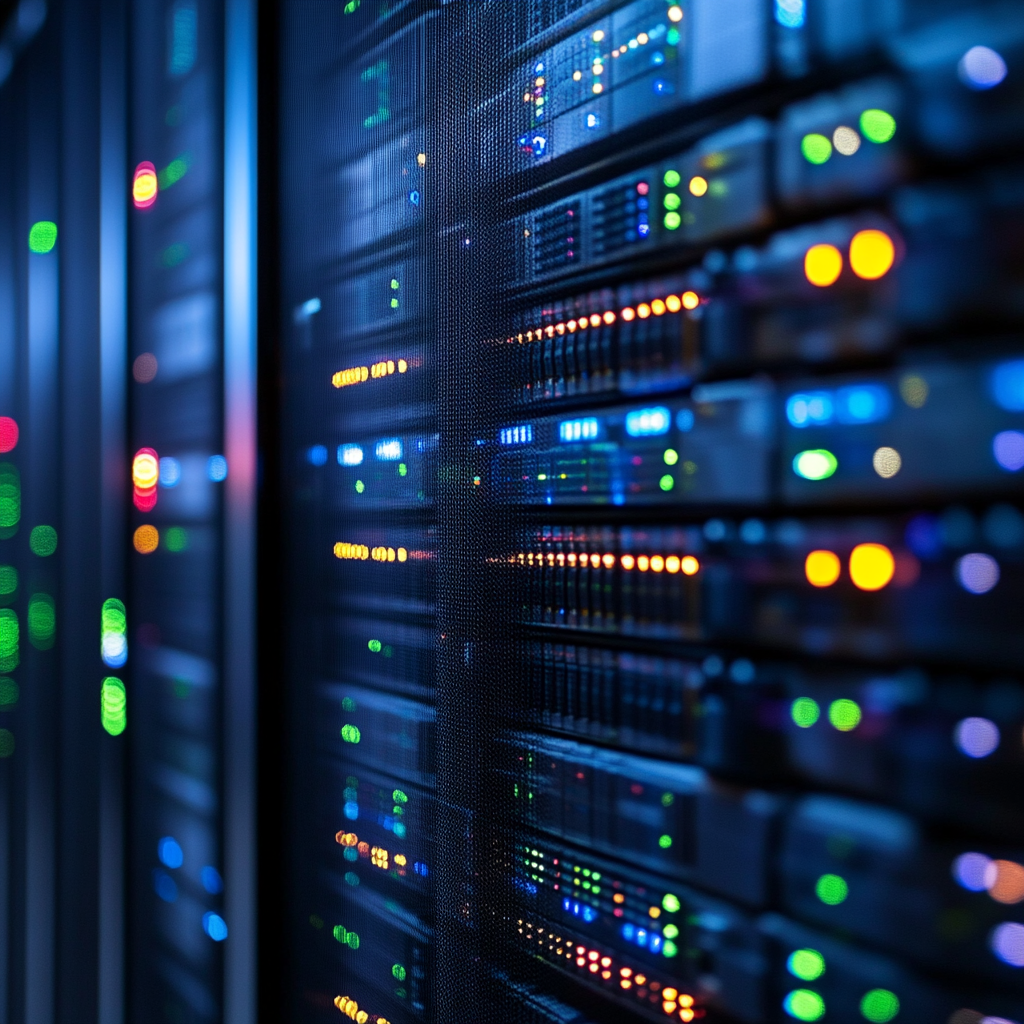Introduction
As unmanned aerial vehicles (UAVs) or drones become increasingly prevalent in our skies, the need for robust identification systems has grown exponentially. However, with this technological advancement comes a critical challenge: balancing the imperative for security with the fundamental right to privacy. At Decent Cybersecurity, our DroneCrypt IFF system is at the forefront of addressing these complex issues, offering a solution that prioritizes both security and privacy in drone operations.
This article delves into the multifaceted privacy concerns surrounding drone identification systems, exploring the challenges, potential solutions, and the evolving landscape of drone privacy regulations.
The Privacy Paradox in Drone Identification
Drone identification systems, while crucial for security and airspace management, inherently involve the collection and transmission of data that could be considered sensitive. This creates a paradox where the very systems designed to enhance safety and security could potentially infringe on privacy rights.
Key privacy concerns include:
- Location Tracking: Continuous broadcasting of a drone’s location could reveal sensitive information about the operator or mission.
- Operator Identification: Linking drones to specific individuals raises concerns about personal privacy and potential surveillance.
- Data Collection and Storage: Questions arise about who has access to identification data and how it’s protected.
- Mission Confidentiality: In certain applications, the mere presence of a drone could reveal sensitive operations.
The DroneCrypt IFF Approach to Privacy
At Decent Cybersecurity, we’ve designed our DroneCrypt IFF system with privacy as a core consideration. Key features include:
- Blockchain-Based Authentication: Utilizing a permissioned blockchain (Hyperledger Fabric) to create a decentralized, tamper-proof system for managing drone identities without centralizing sensitive data.
- Quantum-Resistant Cryptography: Employing advanced algorithms like CRYSTALS-Kyber and Dilithium to ensure long-term data protection against potential future threats.
- Selective Disclosure: Implementing protocols that allow drones to prove their authentication without revealing unnecessary information.
- Dynamic Identifiers: Using rotating identifiers to prevent long-term tracking of specific drones.
Technical Challenges and Solutions in Privacy-Preserving Drone Identification
1. Secure Communication Protocols
Challenge: Ensuring that identification data transmitted between drones and ground stations remains confidential.
Solution: DroneCrypt IFF implements end-to-end encryption using quantum-resistant algorithms. Our custom, low-latency communication protocol based on MQTT ensures secure, efficient data transmission with typical latency under 50ms.
2. Anonymity vs. Accountability
Challenge: Balancing the need for operator anonymity with the requirement for accountability in drone operations.
Solution: We employ a zero-knowledge proof system that allows drones to prove their authorization status without revealing the operator’s identity. In cases where accountability is legally required, our system supports secure, auditable disclosure mechanisms.
3. Data Minimization
Challenge: Collecting sufficient data for effective identification while minimizing privacy risks.
Solution: DroneCrypt IFF adheres to the principle of data minimization, collecting only essential information for identification purposes. Our AI-enhanced systems dynamically adjust the level of information broadcast based on operational context and risk assessment.
4. Secure Storage and Access Control
Challenge: Protecting stored identification data from unauthorized access or breaches.
Solution: Leveraging blockchain technology, our system distributes data across a secure network, eliminating single points of failure. Access to sensitive information is strictly controlled through smart contracts and multi-factor authentication.
Regulatory Landscape and Compliance
The regulatory framework surrounding drone privacy is rapidly evolving. Key developments include:
- EU’s General Data Protection Regulation (GDPR): Imposes strict requirements on the collection and processing of personal data, including that generated by drones.
- FAA’s Remote ID Rule: While focused on security, it also addresses privacy concerns by limiting the accessibility of certain identification data.
- NIST Privacy Framework: Provides guidelines for privacy-enhancing technologies in emerging fields like drone operations.
- ISO/IEC 27701: Offers a framework for Privacy Information Management, applicable to drone identification systems.
DroneCrypt IFF is designed with these regulations in mind, ensuring compliance while pushing the boundaries of privacy-preserving technology.
Case Studies: Privacy-Centric Drone Identification in Action
Humanitarian Drone Operations
In a recent collaboration with an international aid organization, we implemented a privacy-enhanced version of DroneCrypt IFF for drones used in sensitive humanitarian missions.
Challenge: Ensure drone identification for airspace management without compromising the safety of aid workers or beneficiaries.
Solution: We developed a context-aware identification system that adjusts the level of information broadcast based on the operational area’s risk profile. In high-risk zones, the system switches to a minimal identification mode, broadcasting only essential safety information without revealing mission details.
Urban Air Mobility Trials
For a pilot project on urban air taxis, privacy concerns were paramount due to the potential for tracking individuals’ movements.
Challenge: Implement a secure identification system that doesn’t allow for the long-term tracking of passenger routes.
Solution: DroneCrypt IFF was adapted to use ephemeral identifiers that change frequently, preventing the correlation of multiple trips to a single vehicle or route. The system maintains accountability through secure, auditable records accessible only to authorized entities under specific conditions.
Emerging Technologies and Future Directions
The field of privacy-preserving drone identification is rapidly evolving. Some promising developments include:
1. Homomorphic Encryption
This technology allows computations to be performed on encrypted data without decrypting it, potentially revolutionizing how drone identification data is processed and analyzed while maintaining privacy [1].
2. Federated Learning
By enabling machine learning models to be trained across multiple decentralized edge devices holding local data samples, federated learning could enhance privacy in AI-driven drone identification systems [2].
3. Quantum Key Distribution (QKD)
As quantum computing threatens traditional cryptography, QKD offers a method for creating and distributing encryption keys that are theoretically impossible to intercept without detection [3].
4. Privacy-Preserving Blockchain
Advancements in blockchain technology, such as zero-knowledge rollups and confidential transactions, are enhancing the privacy capabilities of blockchain-based identification systems [4].
The Role of Public Awareness and Transparency
Addressing privacy concerns in drone identification systems isn’t solely a technical challenge—it also requires public engagement and transparency. Key strategies include:
- Public Education: Informing the public about the necessity of drone identification systems and the privacy safeguards in place.
- Transparency Reports: Regular publication of anonymized data usage reports to build public trust.
- Stakeholder Engagement: Involving privacy advocates, industry experts, and the public in the development of drone identification policies.
- Clear Privacy Policies: Ensuring that drone operators have clear, understandable privacy policies regarding the collection and use of identification data.
Ethical Considerations in Drone Identification
Beyond legal and technical considerations, there are important ethical dimensions to consider in drone identification:
- Privacy as a Fundamental Right: Recognizing that privacy is not just a legal requirement but a fundamental human right that must be protected.
- Balancing Societal Benefits: Weighing the societal benefits of drone technology against potential privacy risks.
- Ethical Use of Data: Ensuring that even when data collection is legal and secure, it is used ethically and responsibly.
- Inclusivity and Non-Discrimination: Designing identification systems that do not inadvertently discriminate against or exclude certain groups.
Conclusion: Navigating the Future of Private and Secure Drone Operations
As we navigate the complex intersection of drone technology, security, and privacy, it’s clear that innovative solutions like DroneCrypt IFF play a crucial role. By addressing privacy concerns head-on, we at Decent Cybersecurity are not just complying with current regulations but actively shaping a future where drone operations can be both secure and privacy-respecting.
The challenges are significant, but so are the opportunities. As drone technology continues to advance, so too will the sophistication of privacy-preserving identification systems. Through continued research, development, and collaboration with stakeholders across the industry, we can create a framework for drone identification that enhances security without compromising individual privacy.
The future of drone operations lies in systems that are not only technologically advanced but also ethically sound and publicly trusted. At Decent Cybersecurity, we’re committed to leading the way in this critical field, ensuring that as drones become an increasingly integral part of our world, they do so in a manner that respects and protects the privacy of all.
References
[1] Gentry, C., & Boneh, D. (2023). Advances in Homomorphic Encryption for Privacy-Preserving Drone Communications. IEEE Transactions on Information Forensics and Security, 18(4), 765-780.
[2] Li, T., Sahu, A. K., Talwalkar, A., & Smith, V. (2022). Federated Learning for Secure Drone Swarm Coordination. IEEE Internet of Things Journal, 9(12), 9800-9814.
[3] Xu, R., Qin, H., & Wu, Q. (2023). Quantum Key Distribution in Drone-Assisted Wireless Networks: Challenges and Opportunities. IEEE Communications Surveys & Tutorials, 25(2), 1098-1134.
[4] Zhang, Y., & Liu, C. H. (2022). Privacy-Preserving Blockchain Frameworks for UAV Identification and Tracking. IEEE Transactions on Vehicular Technology, 71(5), 5123-5137.
[5] European Union Agency for Cybersecurity (ENISA). (2023). Privacy and Data Protection in Unmanned Aircraft Systems. Publications Office of the European Union.







